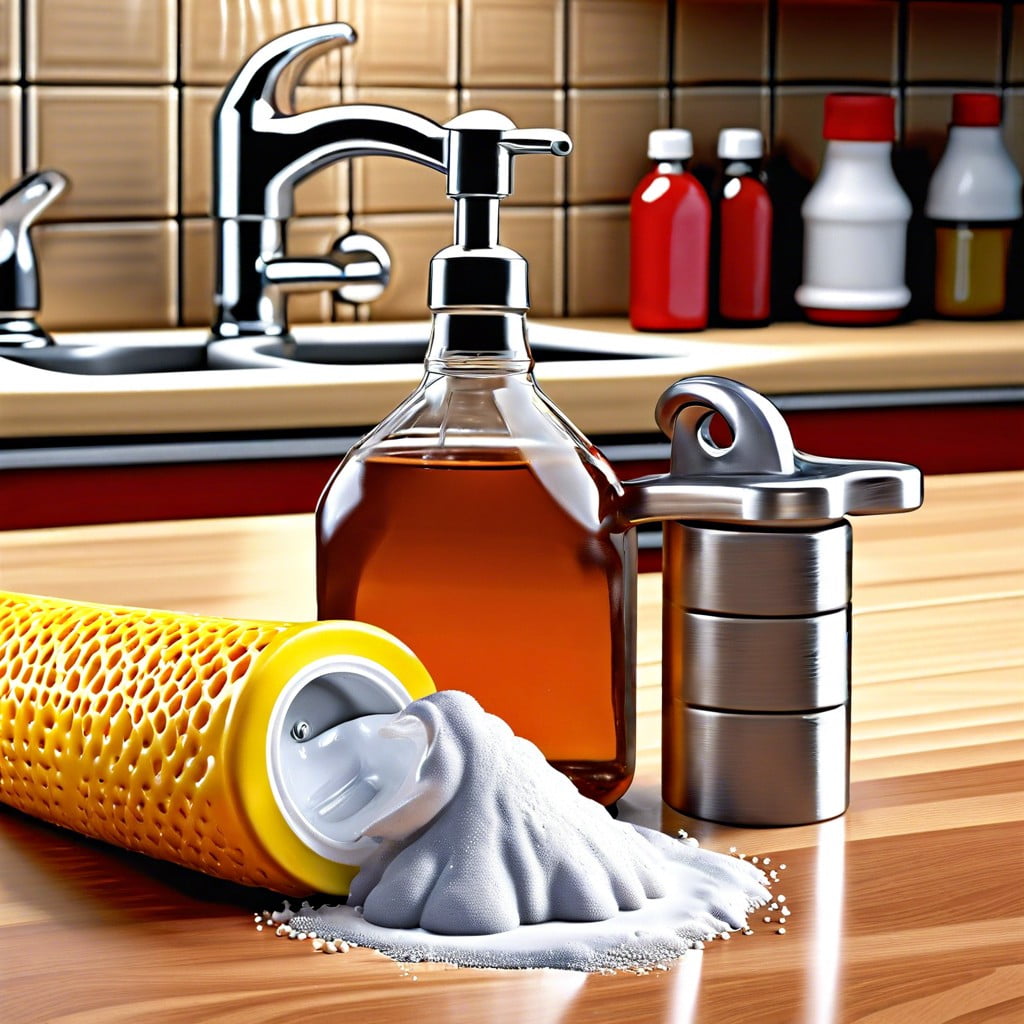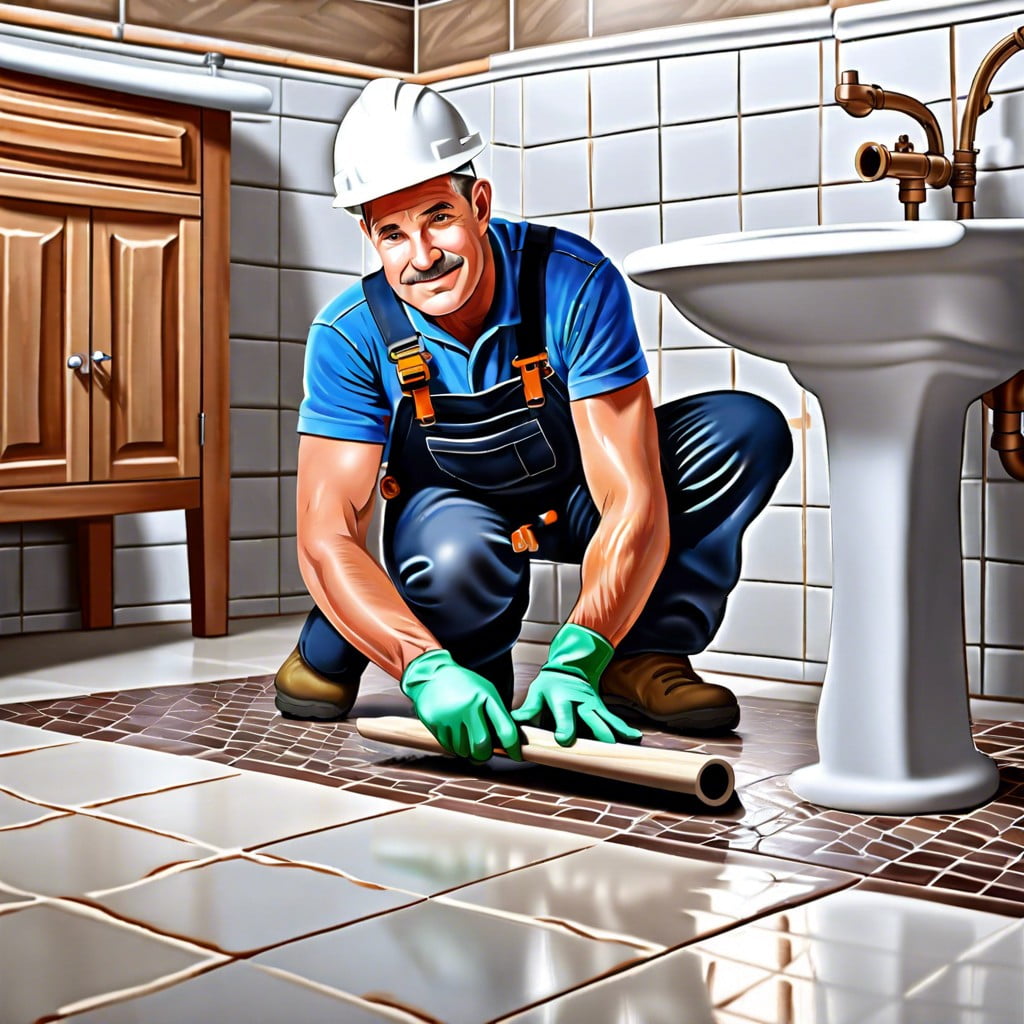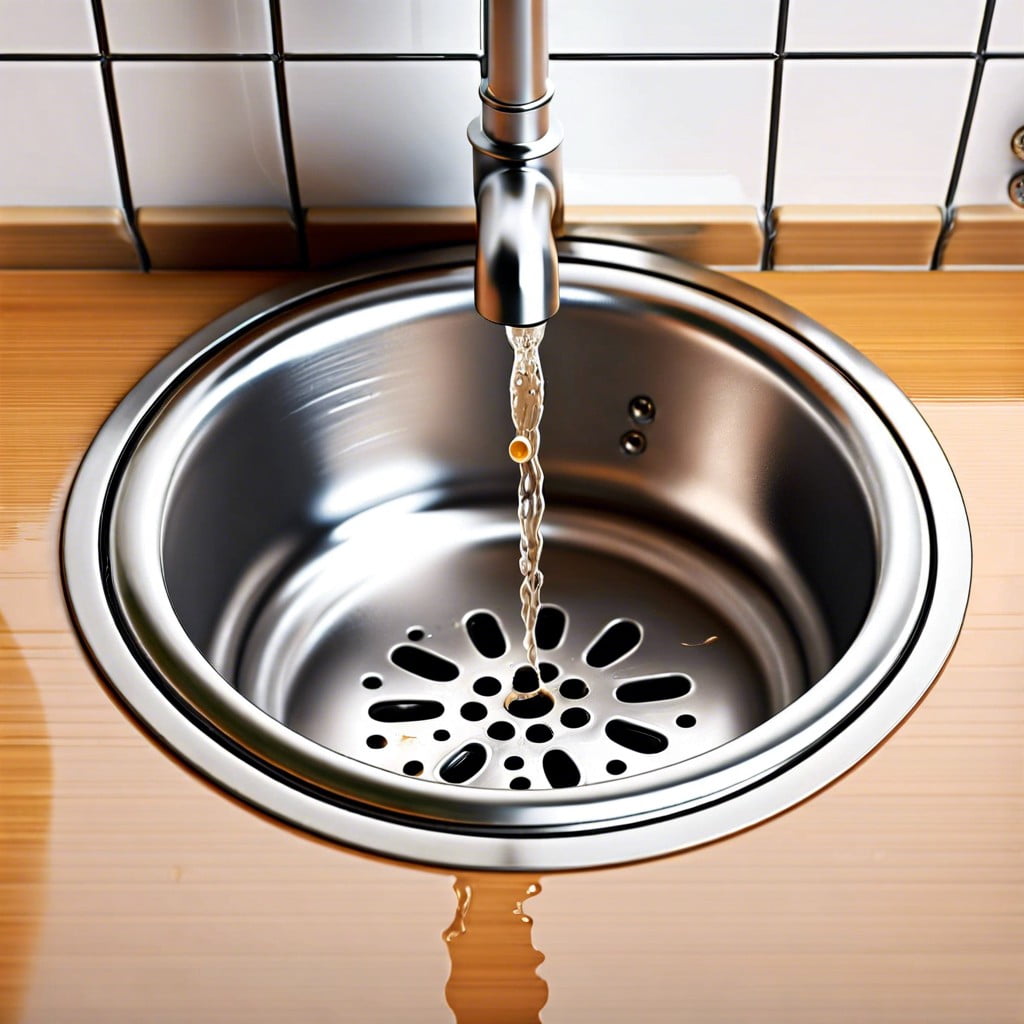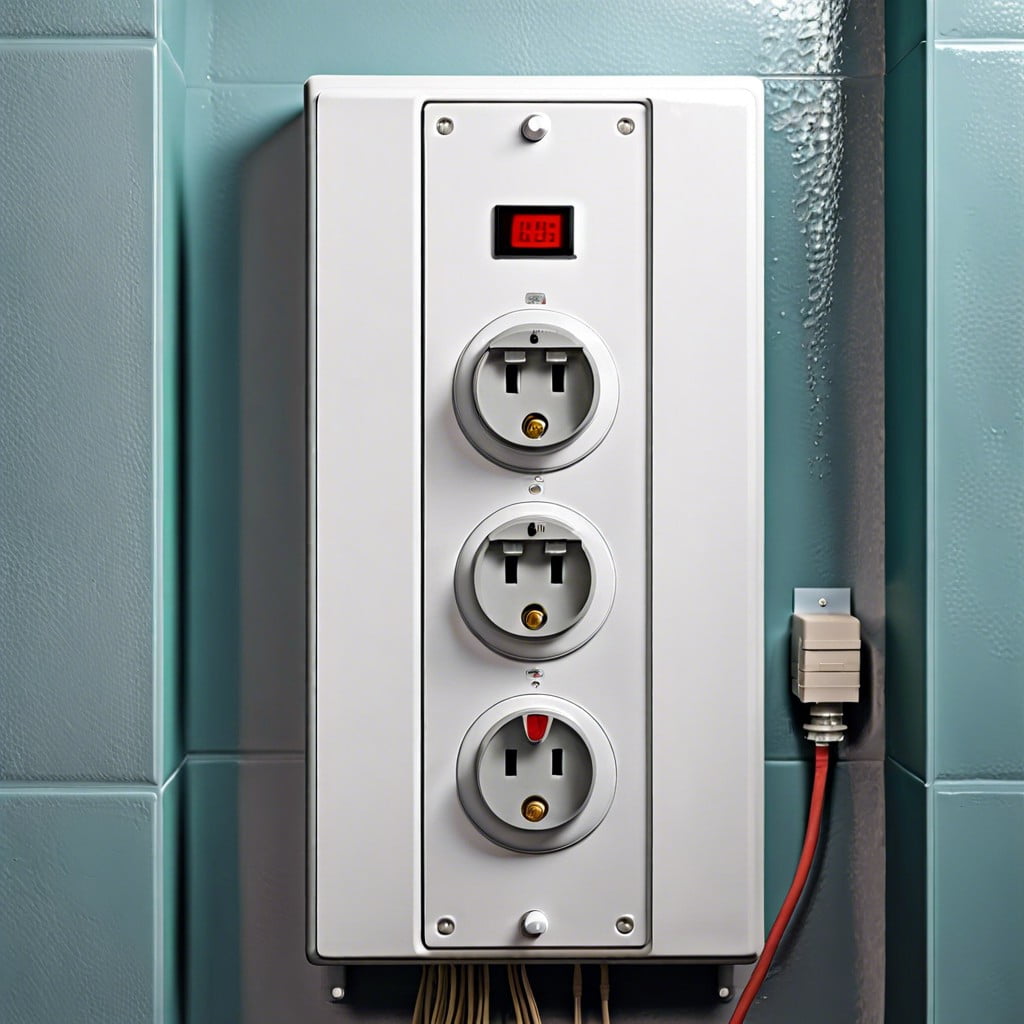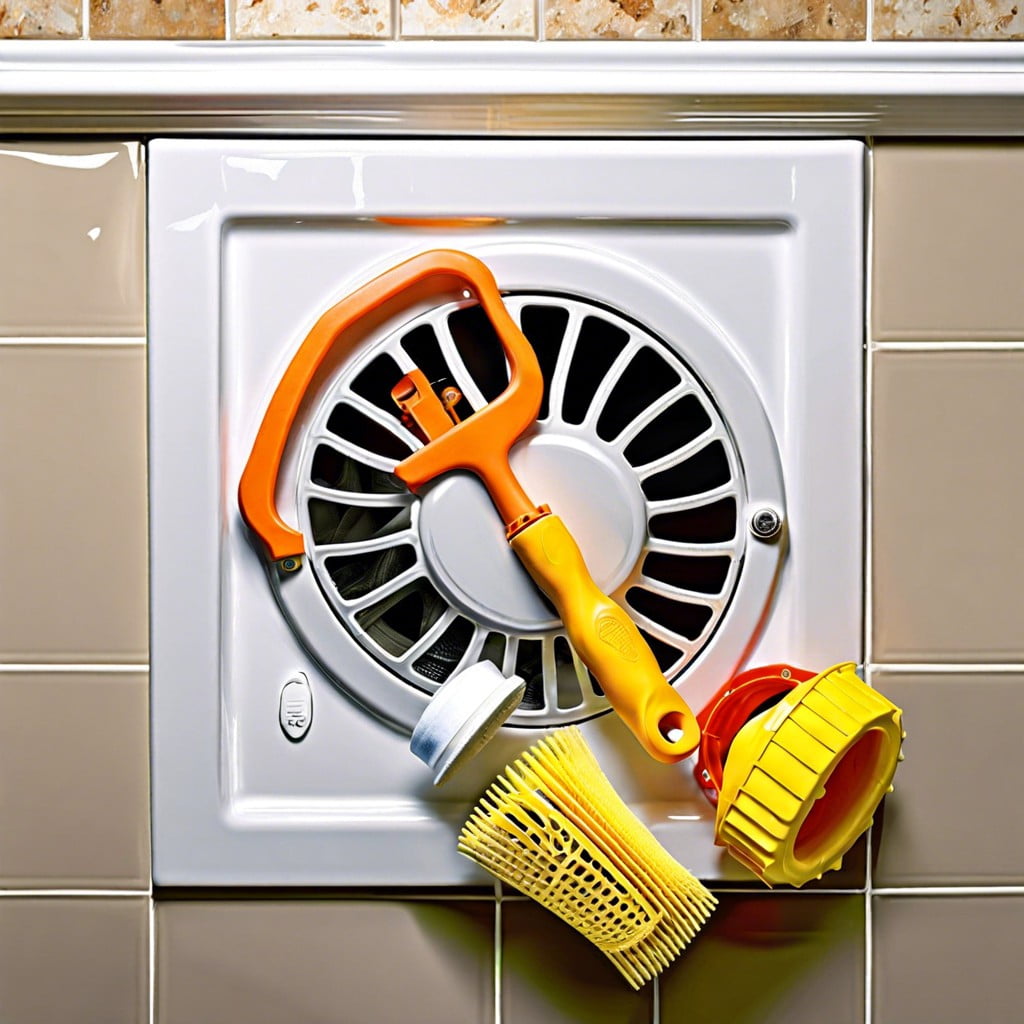Last updated on
Learn how to tile a bathroom wall with step-by-step instructions and professional tips to create an aesthetically pleasing and durable finish.
Key takeaways:
- Choose tiles based on aesthetics and functionality.
- Prepare the wall properly before tiling.
- Lay tiles carefully, paying attention to alignment and cutting.
- Apply grout with a float, utilizing the right technique.
- Consider special considerations for tiling near fixtures like shower heads.
Project Overview
Embarking on a bathroom wall tiling project is not merely about revamping aesthetic appeal; it’s a practical investment in protecting your space.
This exercise demands a clear vision and precise execution.
Proper tiling shields walls from moisture damage, a key consideration in bathrooms where dampness is a constant.
Durability and ease of maintenance are practical benefits that come hand in hand with a well-tiled bathroom wall, not to mention the endless design possibilities to suit personal taste.
A successful project hinges on attention to detail, from the choice of tiles to the quality of materials used for installation.
Let’s ensure we have all the necessary tools and materials at hand before diving into the process to create a water-tight and visually appealing bathroom wall.
STEP 1: Choose Your Tile
When selecting bathroom tiles, consider both aesthetics and functionality. Porcelain and ceramic are preferred for their durability and water resistance.
Larger tiles can create a sense of spaciousness and have fewer grout lines, which means easier cleaning. However, smaller mosaic tiles can offer superior slip resistance and may be ideal for shower floors.
Textured tiles add a tactile dimension and can also prevent slipping, a practical choice in wet areas.
Additionally, consider the light in your bathroom; light-colored tiles can make a small space appear larger, while darker hues lend a cozy, luxurious feel.
Factor in the tile’s porosity; non-porous options are best for high-moisture environments to avoid water damage and mold growth.
Choose a grout color that complements your tiles to achieve a cohesive look.
Invest in quality adhesive and grout that can handle consistent exposure to moisture and temperature changes.
STEP 2: Prep the Wall for Tiling
Before laying tiles, ensuring a clean, level surface is crucial for a professional finish. Strip away old tiles, wallpaper, or flaking paint. Use a drywall repair kit to patch holes or imperfections. Sand any rough areas until smooth.
Next, wash the surface with a degreaser — lingering oils can prevent adhesive from bonding. Lastly, apply a water-resistant primer, especially in showers or areas prone to moisture. This foundational work may seem tedious but don’t underestimate its importance. Remember, a flawless finish starts with meticulous preparation.
STEP 5: Lay the Tiles
Once your adhesive is prepared and your layout is clear, it’s time to tile. Begin from the bottom, pressing each tile firmly into the adhesive with a slight twisting motion to ensure good contact. Keep an eye on your alignment; use spacers to maintain even gaps for grout later. These small plastic heroes will be your guide to a professional look.
Watch for adhesive oozing out from edges, and clean it swiftly—residual adhesive is a hassle when hardened. Remember to periodically check for level both horizontally and vertically. Consistency is key, and diligence here prevents a crooked finished product. When you reach outlets or corners, measure and cut tiles accordingly. Cutting tiles may seem daunting, but a good scoring tool is all about precision—measure twice, cut once.
Proceed one section at a time, allowing tiles to set per adhesive instructions before moving to the next. Patience here is not a mere virtue, but your path to a well-tiled bathroom wall.
STEP 6: Apply the Grout With a Float
When it comes to grouting, timing and technique are crucial for a seamless finish. After waiting for the thin-set mortar to cure properly, it’s time to fill those joints.
Use a rubber float held at a 45-degree angle to firmly press the grout into the gaps between tiles. The angle is key—it allows you to apply sufficient pressure to work the grout into the spaces, without scraping too much over the tile surfaces.
Make sure to spread the grout in multiple directions. This ensures that you’re not just gliding over the top, but actually pushing the grout into every crevice. Mind the force; too gentle, and you won’t fill the gaps, too aggressive, and you could disturb the tile placement.
Once the gaps are filled, the excess grout should be removed swiftly. Drag your float diagonally across the tiles. This helps in avoiding the digging out of grout from the lines you just filled.
Don’t leave any excess grout on the face of the tiles for too long—it can be surprisingly stubborn to remove once it starts setting. Have a damp sponge handy to gently wipe off the residue. Rinse the sponge frequently to keep it clean and minimize grout haze.
Remember, grouting isn’t a race. Take your time to achieve a consistent, smooth finish that will encapsulate your tiling work in a beautifully neat package.
FAQ
Where do you start tiling a bathroom wall?
In tiling a bathroom wall, it’s optimal to begin from the center of the wall and progressively expand outwards, ensuring to maintain level markings using a spirit level.
Can you tile directly on drywall in bathroom?
While it is feasible to tile directly on drywall in bathroom areas with low humidity, it is ill-advised to do so in high-moisture zones such as showers due to potential water seepage, tile damage, and mold growth.
Can I tile bathroom wall myself?
Undeniably, any motivated individual can become a proficient DIY enthusiast and successfully tile their bathroom wall, given the right tools and due diligence in accurately measuring the space.
What is the ideal tile size and pattern for a bathroom wall?
The ideal tile size and pattern for a bathroom wall primarily depends on the size of the bathroom, with smaller tiles and intricate patterns perfect for smaller spaces, while larger tiles and simple patterns suit spacious bathrooms.
How can you ensure the uniformity of grout lines when tiling a bathroom wall?
Uniformity of grout lines when tiling a bathroom wall can be ensured by using spacers which provide equal distance between each tile.
Are there any special considerations for tiling near bathroom fixtures, like shower heads or faucets?
Ensuring a waterproof seal around fixtures and choosing non-porous, slip resistant tiles are crucial considerations when tiling near bathroom fixtures such as shower heads or faucets.
Recap
